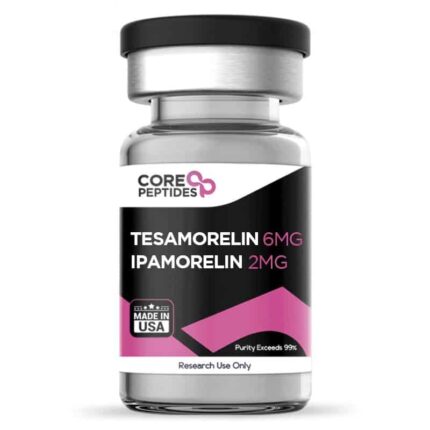
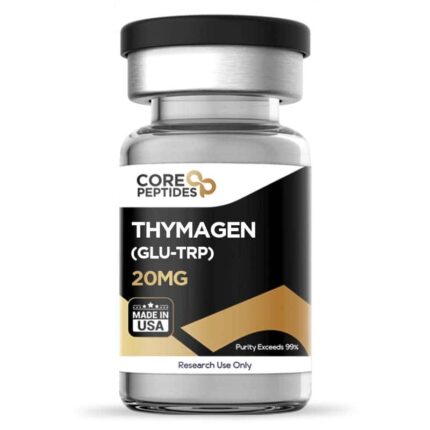
Testagen (20mg)
$86.00 Original price was: $86.00.$63.00Current price is: $63.00.
Size: 20mg
Contents: Testagen
Form: Lyophilized powder
Purity: >99%
SKU: P-TESTAGEN-20
FREE Shipping on $200+ orders
| Quantity | Discount | Price |
|---|---|---|
| 5 – 8 | 5% | $59.85 |
| 9 + | 10% | $56.70 |
Testagen Peptide
Testagen, alternatively known as KEDG, is classified among the Khavinson peptides and functions as a short signaling peptide. Short peptides such as Testagen are also suggested to serve as bioregulators which means that they may potentially cross both the cell and nuclear membranes to interact directly with DNA of target tissues.(1) Potentially, it may interact with the function of the anterior pituitary gland cells and interact with endocrine pathways that play a role in the synthesis of testosterone and thyroid-stimulating hormone (TSH).(2) This is likely due to the synthesis of Testagen, which is based on the amino acid composition of extracts from the anterior lobe of the pituitary gland.(3) As a result, it is made of the amino acids lysine, glutamine, asparagine and glycine, forming a tetrapeptide.
Chemical Makeup
Molecular formula: C17H29N5O9
Molecular weight: 447.2 g/mol
Sequence: Lys-Glu-Asp-Gly
Reconstitution: Required
Other known titles: KEDG, Anterior pituitary peptide (APP)
Research and Clinical Studies
Testagen and the Hypothalamic-Pituitary-Gonadal Axis
Testagen appears to be a bioregulator that may interact with the pituitary gland to upregulate testosterone production. Some trials suggest that the peptide may enhance testosterone production in research models of chronic inflammation and low testosterone as a result. Testagen was suggested to potentially improve uroflowmetry indicators, reduce markers of inflammation, and potentially cause an elevation in the total levels of testosterone. The researchers commented about “a decrease in the level of inflammation in the prostate, an increase in the level of total testosterone.”(4)
While the exact mechanisms behind the potential of testagen remain unknown, some researchers have posited that the peptide may potentially have interactions with histones, which might influence epigenetic mechanisms, affecting cellular activities and differentiation. This interaction between short peptides and histones, particularly in the N-terminal histone regions containing seemingly homologous peptide-binding motifs, suggests an intriguing role in the regulation of chromatin structure and gene expression.
Testagen has been observed to bind to certain histone regions with a specific conformational structure, this implies a potential impact on the structural dynamics of chromatin. Although core histones did not reveal homologous amino acid sequences, the specific binding indicates that peptides might interact with them through unique spatial conformation rather than sequence homology. This complexation with histones, as well as histone-deoxyribooligonucleotide complexes, suggests a site-specific nature, being influenced by the primary structures of peptides and oligonucleotides involved. Testagen appears to be interacting with histones, and may play a role in the conformation and functional state of chromatin, consequently influencing gene activity and cellular differentiation through epigenetic mechanisms. Understanding the exact pathways and impacts of these interactions would require further exploration and detailed studies into how such peptide-histone complexes influence gene transcription, DNA repair, replication, and other cellular processes influenced by chromatin structure.(5)
Testagen and the Hypothalamic–Pituitary–Thyroid Axis
In a thorough exploration of Testagen, its impact was conducted on hypophysectomized avian models. The models were apparently used to analyze the synthetic peptide’s potential on the functional activity and morphological structure of the thyroid gland. Hypophysectomization, a procedure involving the removal or disabling of the pituitary gland, apparently induced a series of physiological alterations in the avian models, such as growth retardation, reduced excitability, and anorexia, along with changes including decreased body and thyroid gland weight, increased thyroid follicle size, and flattened thyrocytes. Furthermore, a notable decrease was reported in thyroid hormone concentrations, including thyroid-stimulating hormone (TSH), T3 (Triiodothyronine), T4 (Thyroxine), and free thyroxine.(3)
After introducing Testagen there appeared to be distinct outcomes noticed among the avian models. An apparent 23% increase in body weight was suggested, complemented by a slight apparent augmentation in the thyroid gland’s weight. Morphological adaptations also appeared to take place, such as an apparent reduction in the mean sectional area of follicles and a potential prevention of follicular epithelium flattening and colloid accumulation within the follicular cavity. Noteworthy appeared to be a well-defined interfollicular epithelium, coupled with variations in the nuclear-cytoplasmic ratio and a decrease in the height of thyrocytes, though these were considered less significant than in the control group. Additionally, Testagen exhibited an apparent stimulating impact on the growth of the thyroid capsule, despite the width of the thyroid capsule in these models still appearing to be inferior to that of control models.(3)
Diving into the realm of aged avian models a normalization of the thyroid gland weight post-Testagen introduction was apparently observed. The synthetic peptide appeared to exert a moderate stimulating impact on the proliferation of epithelial cells. Consequently, the follicle size in these older avian models may have exceeded that of their younger counterparts. While the epithelium shape may have remained almost constant, a minor elevation was apparently seen in the nuclear-cytoplasmic ratio. Overall, the researchers suggested that the peptide may have better action in younger models and commented that “Restoration of the thyroid functions and morphology was registered to be greater in one-year-old chicken as compared to five-year-old ones.”(3)
References:
- Khavinson, V. K.h, Tarnovskaia, S. I., Lin’kova, N. S., Guton, E. O., & Elashkina, E. V. (2014). Advances in gerontology = Uspekhi gerontologii, 27(1), 108–114.
- Kozlov KL, Bolotov II, Linkova NS, Drobintseva AO, Khavinson VK, Dyakonov MM, Kozina LS. [Molecular aspects of vasoprotective peptide KED activity during atherosclerosis and restenosis]. Adv Gerontol. 2016;29(4):646-650. Russian. PMID: 28539025.
- Khavinson V, Ilina A, Kraskovskaya N, Linkova N, Kolchina N, Mironova E, Erofeev A, Petukhov M. Neuroprotective Effects of Tripeptides-Epigenetic Regulators in Mouse Model of Alzheimer’s Disease. Pharmaceuticals (Basel). 2021 May 27;14(6):515. doi: 10.3390/ph14060515. PMID: 34071923; PMCID: PMC8227791.
- Khavinson VK, Lin’kova NS, Umnov RS. Peptide KED: Molecular-Genetic Aspects of Neurogenesis Regulation in Alzheimer’s Disease. Bull Exp Biol Med. 2021 May;171(2):190-193. doi: 10.1007/s10517-021-05192-6. Epub 2021 Jun 26. PMID: 34173097.
- Khavinson VKh, Linkova NS, Polyakova VO, Kheifets OV, Tarnovskaya SI, Kvetnoy IM. Peptides tissue-specifically stimulate cell differentiation during their aging. Bull Exp Biol Med. 2012 May;153(1):148-51. doi: 10.1007/s10517-012-1664-1. PMID: 22808515.
- Meshchaninov VN, Tkachenko EL, Zharkov SV, Gavrilov IV, Katyreva IuE. [EFFECT OF SYNTHETIC PEPTIDES ON AGING OF PATIENTS WITH CHRONIC POLYMORBIDITY AND ORGANIC BRAIN SYNDROME OF THE CENTRAL NERVOUS SYSTEM IN REMISSION]. Adv Gerontol. 2015;28(1):62-7. Russian. PMID: 26390612.
Dr. Marinov
Dr. Marinov (MD, Ph.D.) is a researcher and chief assistant professor in Preventative Medicine & Public Health. Prior to his professorship, Dr. Marinov practiced preventative, evidence-based medicine with an emphasis on Nutrition and Dietetics. He is widely published in international peer-reviewed scientific journals and specializes in peptide therapy research.


MAECENAS IACULIS
Vestibulum curae torquent diam diam commodo parturient penatibus nunc dui adipiscing convallis bulum parturient suspendisse parturient a.Parturient in parturient scelerisque nibh lectus quam a natoque adipiscing a vestibulum hendrerit et pharetra fames nunc natoque dui.
ADIPISCING CONVALLIS BULUM
- Vestibulum penatibus nunc dui adipiscing convallis bulum parturient suspendisse.
- Abitur parturient praesent lectus quam a natoque adipiscing a vestibulum hendre.
- Diam parturient dictumst parturient scelerisque nibh lectus.
Scelerisque adipiscing bibendum sem vestibulum et in a a a purus lectus faucibus lobortis tincidunt purus lectus nisl class eros.Condimentum a et ullamcorper dictumst mus et tristique elementum nam inceptos hac parturient scelerisque vestibulum amet elit ut volutpat.


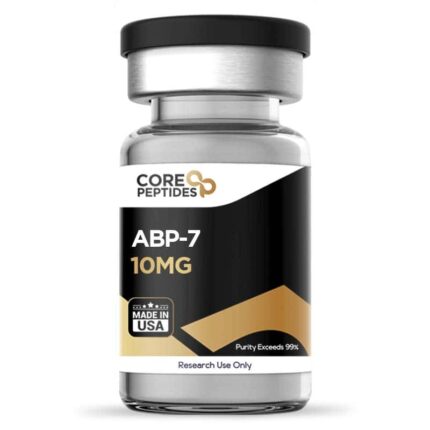

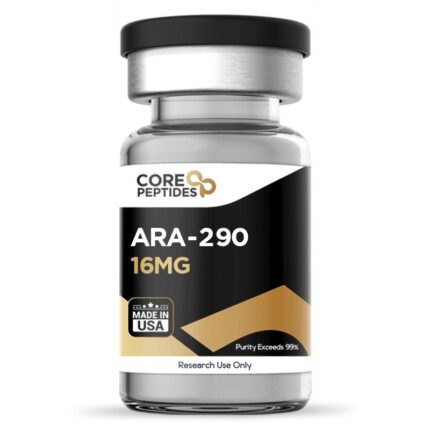
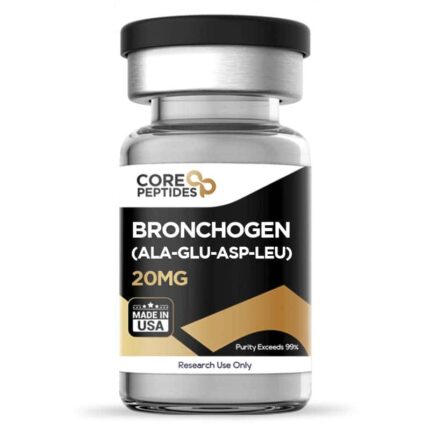
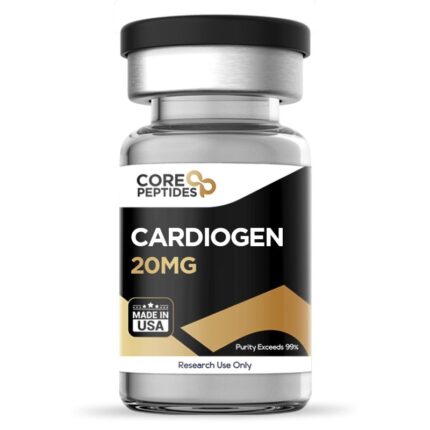
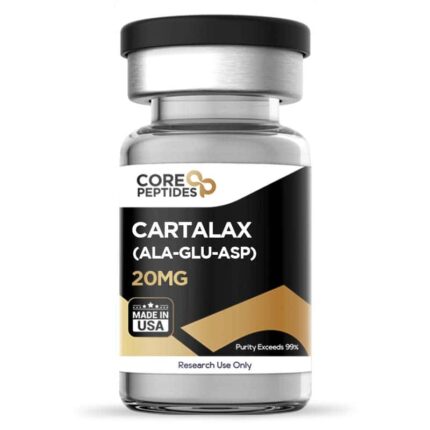
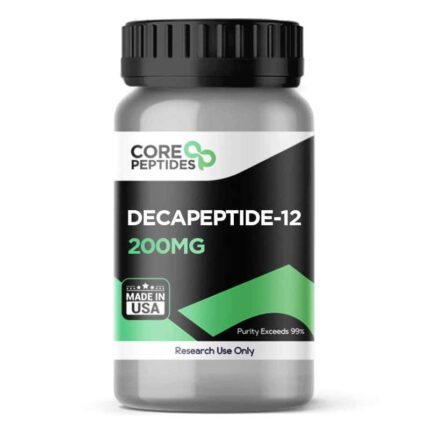
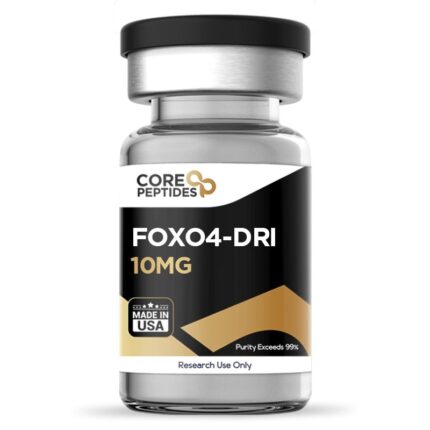
Reviews
There are no reviews yet.